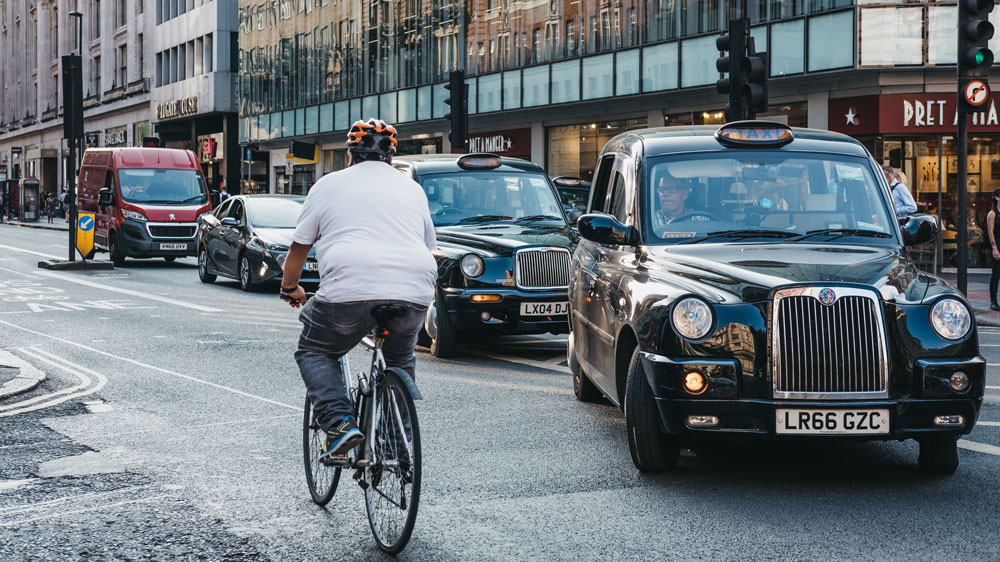Learn How To Cycle Safely With Cycling UK’s Free Webinars
Sign up to one of these cycling proficiency Zoom classes designed to help commuters feel more confident riding on the road

While riding a bike is famously a skill that you never truly lose, cycling on roads is a different kettle of fish altogether. Even the most steady cyclist may find themselves unnerved the first time they hear a vehicle approaching from behind.
It’s a perfectly understandable feeling, but the good news is that the perception of how dangerous roads are for cyclists is not always in line with the reality and there are techniques which can make cycling on roads about as safe as can be. One of the best tips we’ve been given is to make eye contact with other road users, because communication is essential whichever mode of transport you use.
For more tips, whether you’re a completely new or experienced rider, sign up for a free cycling proficiency webinar put on by Cycling UK in partnership with Clif, maker of energy bars. There are two sessions, and each is run five times so you should be able to find a date and time to suit your schedule.
The Beginner/Intermediate session runs through the basics of equipment, bike set-up and road skills. The first class is on Monday 28th September at 7.30pm, with sessions held at 12.30pm and 7.30pm the following two Mondays.
The Advanced course includes advice on how to stay safe at multi-lane junctions and filter past stationary traffic. This course mirrors the same schedule, but runs on Tuesdays. See the full schedule and register on the Cycling UK website.
To give you a flavour of what’s in store, and hopefully make you a safer cyclist just by reading this, we asked Matt Lamy of Cycling UK for some beginner tips. Here’s what he came back with.
Three Beginner Cycling Safety Tips
1. Set your saddle at the right height
When you’re new to cycling, it’s common to have your saddle too low, which means you have less leg power for pedalling. When setting up your bike, set your saddle height to allow a very slight bend in your knee when your foot is at the bottom of the pedal stroke. If you’re unsure of how to do this, your local bike shop will be happy to help.
Get the Coach Newsletter
Sign up for workout ideas, training advice, reviews of the latest gear and more.
See related
2. Don’t hide on the edge of the road
It’s common for new cyclists to keep tight against the kerb to stay out of the way of traffic. The downside is that other road users may take advantage of this and often try to squeeze past you in places where there is not enough room to do so safely. You could be in danger of colliding with the kerb or puncturing your tyres from debris on the side of the road, and also risk not being seen by other vehicles. Be confident and ride about a metre from the kerb.
3. Make sure your helmet is on properly
While helmet use is not compulsory, if you do wear one it is important to make sure it is fitted correctly. First of all, check that it is the right way round – we often see riders with them on back to front – and ensure it is sitting level on your head, evenly protecting the front and back of your skull. The straps should be done up comfortably under your chin. When you purchase a helmet, the bike shop can also help you fit it and adjust it properly.

Nick Harris-Fry is a journalist who has been covering health and fitness since 2015. Nick is an avid runner, covering 70-110km a week, which gives him ample opportunity to test a wide range of running shoes and running gear. He is also the chief tester for fitness trackers and running watches, treadmills and exercise bikes, and workout headphones.
